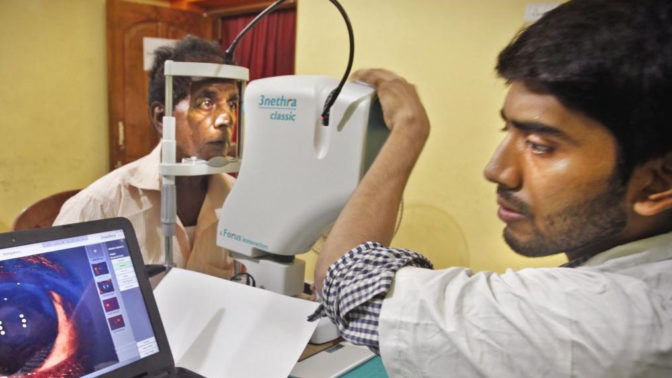Catalyzers of social innovation in under served markets: The case of IoT technologies

Internet-of-things (IoT) is one of the key components of the information and communication infrastructure needed for social impact creation in under served markets. A recent study conducted by World Economic Forum also showed that of more than 640 IoT projects, 84% of existing IoT deployments can contribute to the UN Sustainable Development Goals (SDGs)[1]. Applications of IoT are being observed in developing countries across various sectors including energy (e.g. smart grids, energy usage optimization) and healthcare (remote monitoring of health conditions, offering preventive medications) sectors. In healthcare sectors, it is often common that physical medical devices are combined with sensors that work as a remote monitoring tool of bodily functions and the wellbeing of people living in rural (under served) areas. The data gathered and analyzed through the sensors allows healthcare providers to make informed decisions and to detect emerging problems to prescribe tailored treatment. The impact can be further combined with other aspects such as medicine monitoring, mobile clinic, electronic medical records, or training of community healthcare workers.
IoT used by small enterprises in under served communities
IoT solutions are being used by multiple small enterprises to drive impact in under served communities around the world. As part of an ongoing study, exemplary cases from healthcare and energy sector have been investigated. Exemplary cases from healthcare include Sevamob, iKure, Niramai or Sugha Vizhu, while in the energy sector they include Angaza, M-Kopa or SteamaCo. As part of the study, several key insights emerge and they are outlined below.
IoT enables small firms to achieve scale and financial viability.
IoT addresses one of the key challenges faced by small enterprises in under served markets: reaching scale and thereby financial viability. IoT provides multiple solutions to maximize the revenue (e.g. introduction of new services at large scale, development of new markets), reduce costs (e.g. significantly reduce process costs, monitoring of customer payments) and to provide affordable technological infrastructure in remote areas (e.g. cloud solutions working without internet). In the healthcare sector, examples include the provision of various services related to patient education: virtual training, behavioral coaching, and instructions for treatment. In the energy sector, new services enabled by IoT include risk mitigation through automated and intelligent controls and decision-making support tools in regard to energy saving. IoT can significantly reduce costs at the process level through automation and low-priced connectivity facilitated by the communication between connected devices thereby resulting in operational leanness and flexibility which is a requirement for success in remote areas.
IoT enhances societal impact through its focus on predictive and preventive interventions.
IoT capabilities enable the transition from reactive to preventive intervention in both the healthcare and energy sector and this transformation can drive significant changes at societal level. IoT sensing technology and dynamicity detect and measure real-time data and variations in the environment and enables predictive support and potential failure/risk alert.
- In the healthcare sector, early diagnosis and detection, statistics on disease prevalence and risks, and real-time alert on a patient’s health shift the focus on preventive care. The transition to preventive care not only improves the outcome of disease treatment, but also decreases social costs related to overall healthcare in under served markets.
- In the energy sector, IoT data analytics facilitate a transition from risk-based, reactive to proactive and preventive maintenance by locating outages, remotely fixing faults, predicting energy consumption and shortages, and monitoring real-time energy performances. In the energy sector, a preventive focus is particularly important because the cost of accessing a device after-sale for maintenance or replacement in remote areas is extremely high.
The insights are based on an ongoing research project by Eugenia Rosca and Sue Park from Tilburg University and Nivedita Agarwal from FAU.
[1] Arias, R., Lueth, K. L., & Rastogi, A. (2018). IoT for Sustainable Development Project. Retrieved from https://www.weforum.org/agenda/2018/01/effect-technology-sustainability-sdgs-internet-things-iot/; http://widgets.weforum.org/iot4d/